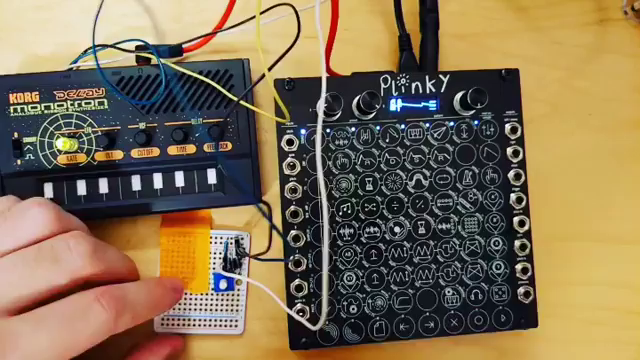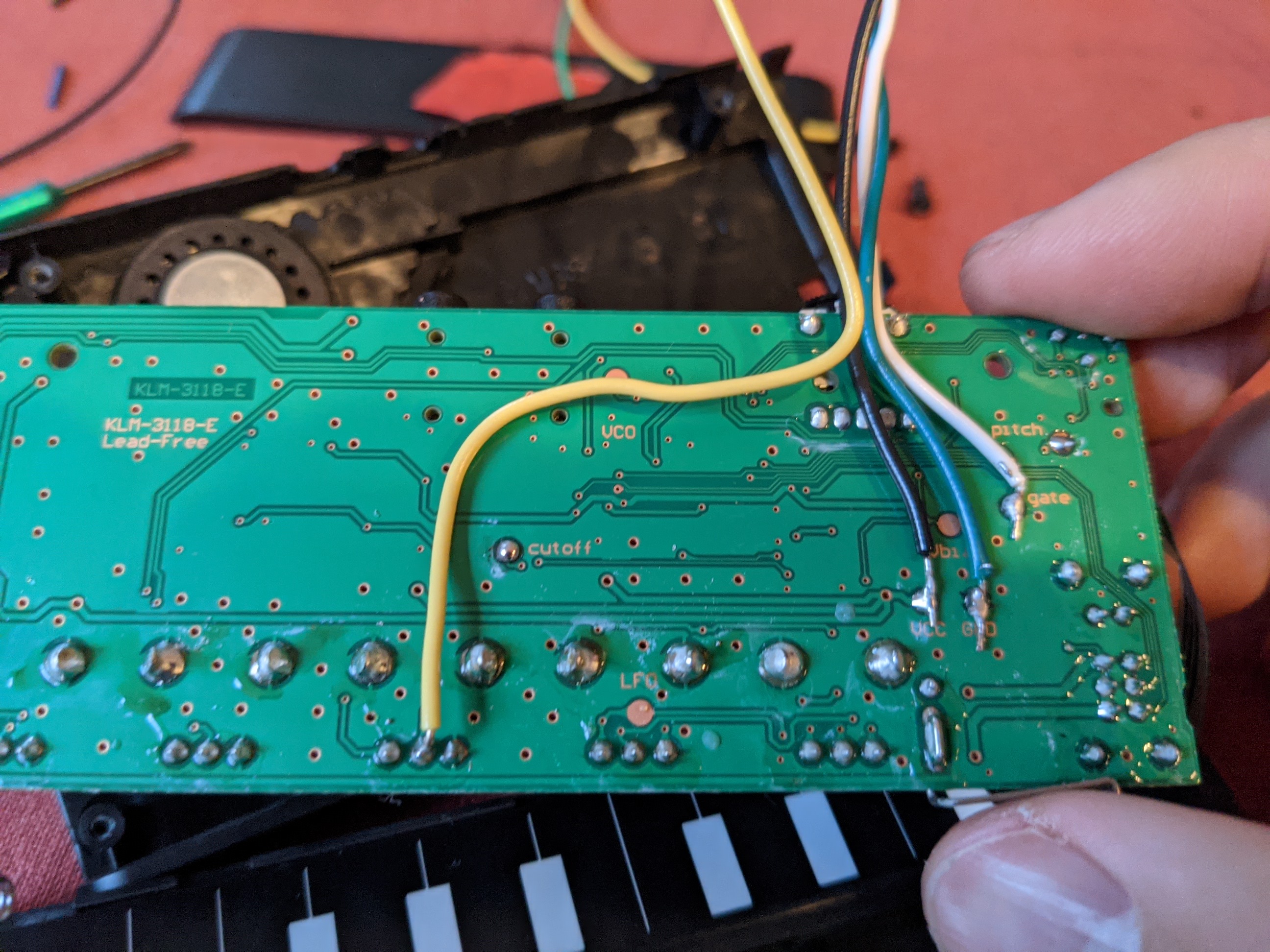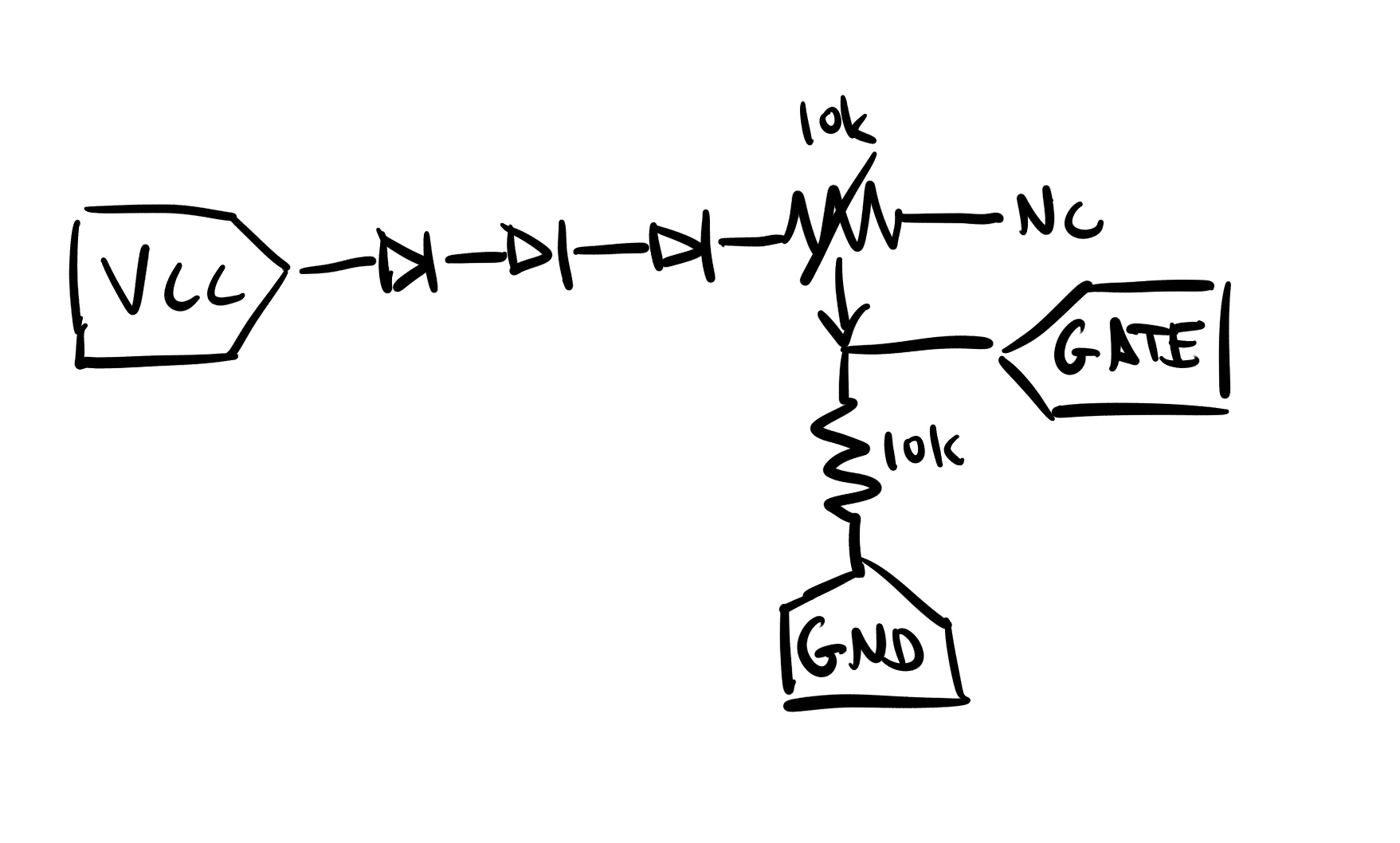
The Korg Monotron is a good sounding synthesizer for a relatively cheap price (~$50). One drawback of the Korg Monotron is that it uses a ribbon controller to determine the pitch so it is very hard to control the pitch accurately, and almost impossible to be in tune by yourself. In a previous project I developed a MIDI-to-CV controller using a Raspberry Pi. In this tiny hack I focus on making the Monotron play by itself again - by being always on and droning. The pitch of the drone can be easily adjusted and you can then use it for great effect!
What does this tiny hack do?
Here’s a demo of the tiny hack! Basically this hack allows me to easily play the Monotron as drone while playing other synthesizers. In this demo I’m having the Monotron drone on a low C, while I play chords on top of it!
Why do this tiny hack?
The Korg Monotron usually don’t turn “on” until you press the ribbon keyboard. So if you want the Monotron to drone on one note you’d have to press your finger down on it and leave your finger there. Using this hack you can replace your finger with a potentiometer which always keeps it “on” and also sets the pitch to whatever you want! Its still manually controlled, but now using a pot instead of a ribbon.
How do I do this tiny hack?
If you already have some diodes and resistors and a potentiometer, this hack will cost you nothing. Otherwise you can get those basic utilities:
To connect it you will first need to solder wires to the back of the Korg Monotron. Unscrew the Korg Monotron and attach three wires to the pads labeled “VCC”, “GND”, and “GATE” (yes “PITCH” is a pad, but we will not use it).

Then you can build a simple circuit using the resistor, potentiometer and the diodes.

Why does it work? Basically the diodes are there to drop the voltage of Monotron (which runs > 4V) to the highest voltage of a pitch (~3 V). Then the potentiometer and resistor form a voltage divider that divides the voltage even further proportional to turning it. This way the knob turns between allowable notes (low notes to the left and high notes to the right).
Uh oh something bad happened!
Oh no! I’m happy to help - just DM me on Twitter (@yakczar) or email me.